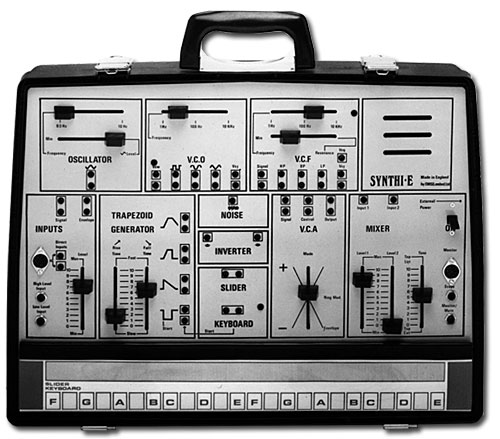-
A modular synth that won’t break the bank (Part 2)
Posted on March 25th, 2012 No commentsRethinking modular synth system design
I was out at Megadork at the Love Bytes festival in Sheffield on Friday and they had one of the original designers of the Reactable speaking. He explained it in terms of being a modular synth. It does look cool, but it also seems strange to build a tangible computer simulation of an already tangible entity. Programmers will program I guess. Solderers will solder.
In part 1 of this series I wrote about how my quest for a beginner-priced modular synthesizer started me on the road to fight design flab and reduce costs. How could a cheaper modular synth differ from the standard offerings? It seemed to me that the classic design of a rack with many individual modules was always going to be an expensive solution. I wanted something that could still be used in a modular way but where the modules were bigger pieces of the design and the mounting was lower cost.
Researching in to the history of modular synths I came across an obscure teaching product called the EMS Synthi E from 1975. Designed for school and colleges this is a perfect little modular synth built in to a suitcase. It doesn’t do anything too fancy but it has all the core functions needed to get started creating analogue sounds. If it was still available I would have gone out and bought it. As it isn’t available I decided to take the idea of packaging the basic parts in to a self-contained but still expandable system as the basis for my design.
The next challenge was to think about the simplest useful set of functions. The goal was to have something that could start really small and grow. With this in mind the Korg Monotron was the inspiration behind the first module. The Monotron proves that two oscillators and a filter can be a great instrument and a lot of fun to play with and those are the functions I decided to put in the base module. The current prototype design for the base module has the following features:
- Primary oscillator with square, triangle, sine, ramp and sawtooth waves
- Secondary oscillator which either tracks the primary or acts as a Low Frequency Oscillator (LFO)
- Voltage controlled low-pass filter with resonance and cut-off control
How might the other modules look? This is my rough thinking:
- Amplitude based functions: Envelope generator, Voltage controlled amplifier/ring modulator and extra oscillator
- Signal interfacing functions: signal processor and amplifiers, mixer, delay(?)
- Enhanced filters: band pass, band stop, notch and high pass
Another barrier to cheap systems is the split-rail power supply that most modular synths need. The power supply on its own often costs more than I want to get the first module out for. My solution: two 9V batteries. It’s a hack, but it gives you something that is simple and portable.
What else might change at the system level? Well, I had to make some decisions about signal levels and MIDI support. Tune in to part 3 soon to lean about those aspects.



